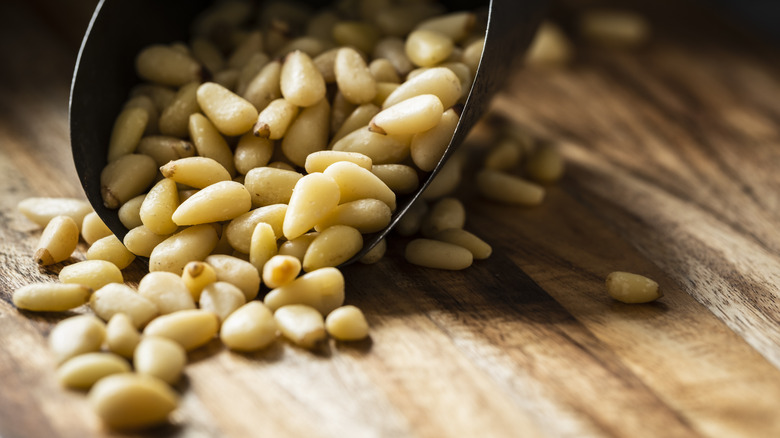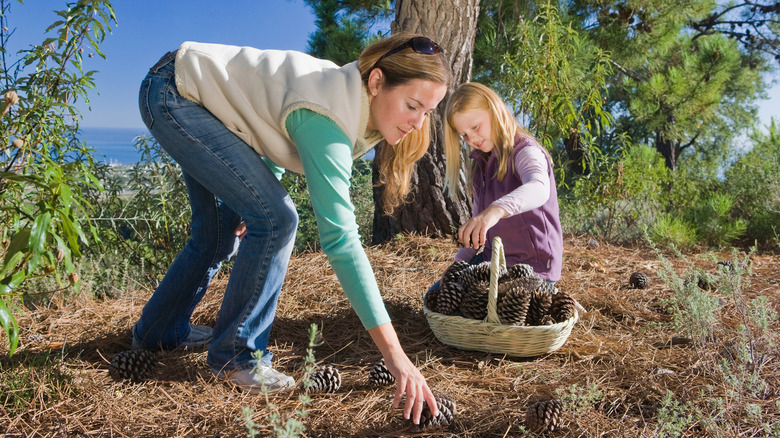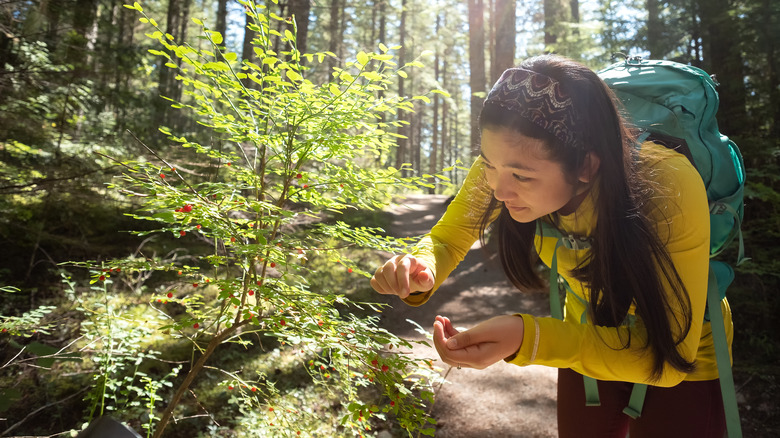The Safety Risks To Know Before Harvesting Your Own Pine Nuts
Pine nuts are a curious food that aren't nuts at all, despite their decidedly nutty name. As explained by Reader's Digest, pine nuts are actually small seeds found within pine cones, which are produced by pine trees. That means it's possible to take pine cones and harvest tasty seeds from them. However, not all species of pine trees produce seeds that are safe for humans to eat. For instance, yew pines contain seeds that are highly toxic, according to Four Season Foraging.
Yew pines can be found all over the U.S. and are often used for landscaping purposes (although the trees prefer moist areas with plenty of shade). They can usually be identified by the flat, pointed leaves that sprout in two opposite rows from the interior branch. Seeds are concealed by red, berry-shaped arils, unlike other pine trees with their ubiquitous cones. These berries are extremely toxic, much like all other parts of the plant. Their toxicity is thanks to taxine, an organic compound that depresses cardio function. The compound is so hazardous that it can cause death within just a few hours of consumption. As a result, foragers must avoid yew pines, while also steering clear of other types of potentially hazardous pine nuts.
Are there other toxic pine cone species to avoid?
With over 120 species of pine trees all over the globe, it's crucial to know which species bear seeds that are not considered edible due to concerns about toxicity. This is the case with yellow pines, which is unsafe for consumption and should be avoided by foragers as a result. Also referred to as southern yellow pines, this tree can be identified by its lengthy needles, barren bottom branches, and rounded canopy. The cones of yellow pines, which is where the seeds are found, can grow up to 12 inches.
Ponderosa pine is another potentially problematic species that should be avoided if you're seeking edible seeds for your homemade pesto sauce. You can identify ponderosa pines by their brownish, red-tinged pine cones, which can be up to six inches in length. As for the needle-shaped leaves, these typically measure up to seven inches and range from green to a yellowish shade. At full maturity, ponderosa pines take on a cylinder shape. Because there are so many pine cone seeds that people are discouraged from eating, it also helps to know which species are safe when foraging.
Which species of pine trees yield edible seeds?
Most edible pine nuts come from a certain species of trees — pinyon pines. Pinyon pines can be found in many areas of the southwestern portion of the U.S. and do well in dry, arid regions. Needles appear stiff and long and typically grow in pairs along the branch. As for the pine cones, they are usually a reddish-brown shade and yield a rather large seed (which makes for easier harvesting).
While less common, other pine trees also yield edible seeds. This is true of sugar pine, which ranks as the largest pine species in the world. For example, a sugar pine cone can grow up to 22 inches in length. Cones are very easy to detect, as they can be found at the very end of the tree's branches. As for the needle-shaped leaves, they sprout in groups of five from the branches.
Foraging is a great way to gain a greater understanding of where your food comes from, provided you're knowledgeable in your approach. If you're thinking about harvesting pine nuts, you must know which species are safe to avoid major illness.


